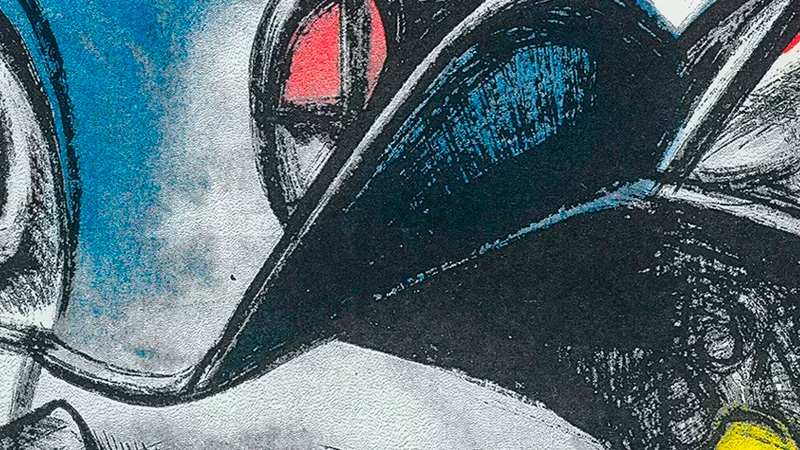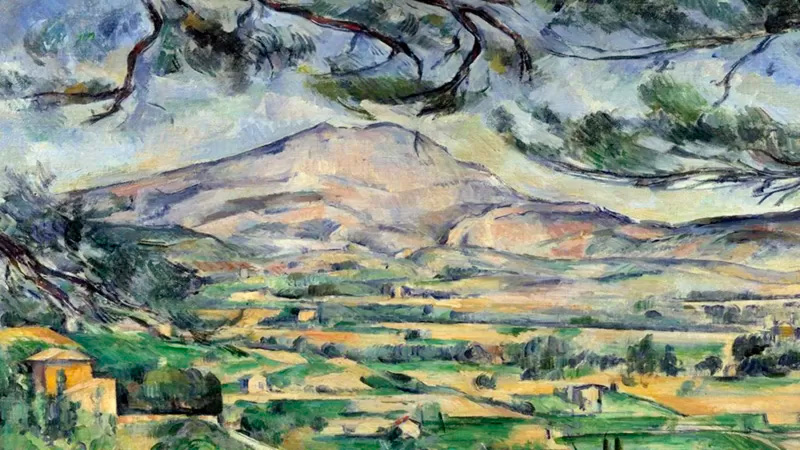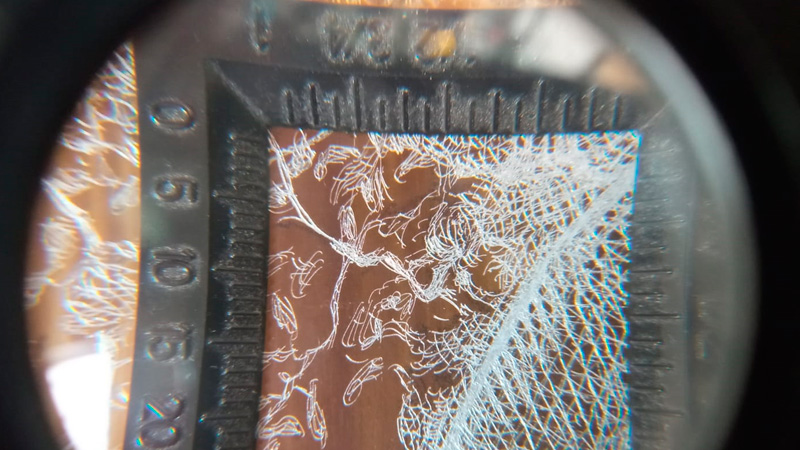Riso prints have become popular in fanzine publishing and short-run press and are being used more and more often in serial art publishing. It is like a mechanized – and, thus, faster – version of screen printing. However, the resemblance to the screen printing being significant because it prints by separate layers of colour. You cannot print multiple colours simultaneously, although some machines with double printing devices facilitate two distinct colours to be printed one after the other. Still, the printing principle is the same.
Risograph is like a copy machine, including a scanner on top of the machine where you place the original. Newer devices can also process digital files like a regular printer. But from there, the machine will print all the colours separately, just like screen printing.
There is a ‘drum’ within the machine, a cylinder filled with colour ink and covered with a metal screen pierced with small holes. When starting to print, the device creates a pattern (master), a sheet that will cover the screen of the drum and works as a template that performs the same function as a silkscreen. This pattern allows the ink to flow where it should and will stop its flowing where you do not want to print colour. The drum rotates, allowing the paper to pass through it, and the ink will ‘stamp’ according to the master, thus resulting in a first impression. If you want to print several colours, you must repeat this process with different drums by building a master and printing layer by layer.
Some editions in Riso duplicator may contain saturated colours that make them look easy to produce. However, appearances can be misleading as Risograph printing (duplication) is challenging to master as its nature implies a degree of unpredictability. To create the perfect print, you need to find the balance between the original design and how the print result will best look, and know that the print will always be a little different from what you planned.
Do not forget that, while the procedure may have quite a few elements in its favour, it may also have some limitations. For example, it is a great advantage to be able to play with colour tones. Therefore, a colour can be printed in all possible tones simultaneously, which means that it is possible to mix colours and obtain the correct nuances. Indeed, the same applies to offset printing, but offset is too expensive, and small runs are not worth producing. However, there are some limitations that, if not considered, can cause significant copying problems. As a general measure, you should always go the extra mile to improve the quality of your files and their settings, even if it takes a longer time. It is essential adding strokes to capture the various drawing elements, thus improving its registration, cleaning up the scanned drawings, being aware of the limitations and managing the expectations.
Many artists like printing by Riso precisely because of the unevenness of the textures and the way the colours overlap. Sometimes, small misalignments make them appear more hand-made despite the intervention of a machine.
The process to work with the printing workshop is easy. It is enough to make the drawing, scan it, and then edit the file with Photoshop, where the colour layers are separated (CMYK). This file is finally sent to the printer, along with instructions on colour and preferred paper. If you have the right professionals to make the prints, the artist will only have to focus on the design of the work.
When working in the original, it is possible to design in a certain number of colours directly. Colours can range between two to as many others as we want, considering the technical limitations and the printer’s skills. Most Riso printing workshops have a limited number of colours, so the first step is to check which ones can be used. The second step is sending the machine the first colour layer in black and white, where black is equivalent to 100% colour, and greys provide its different intensities. Finally, as with screen printing, Riso ink needs to dry. So, after allowing all the prints to dry, the process is repeated, which involves making a new master for each colour layer.





